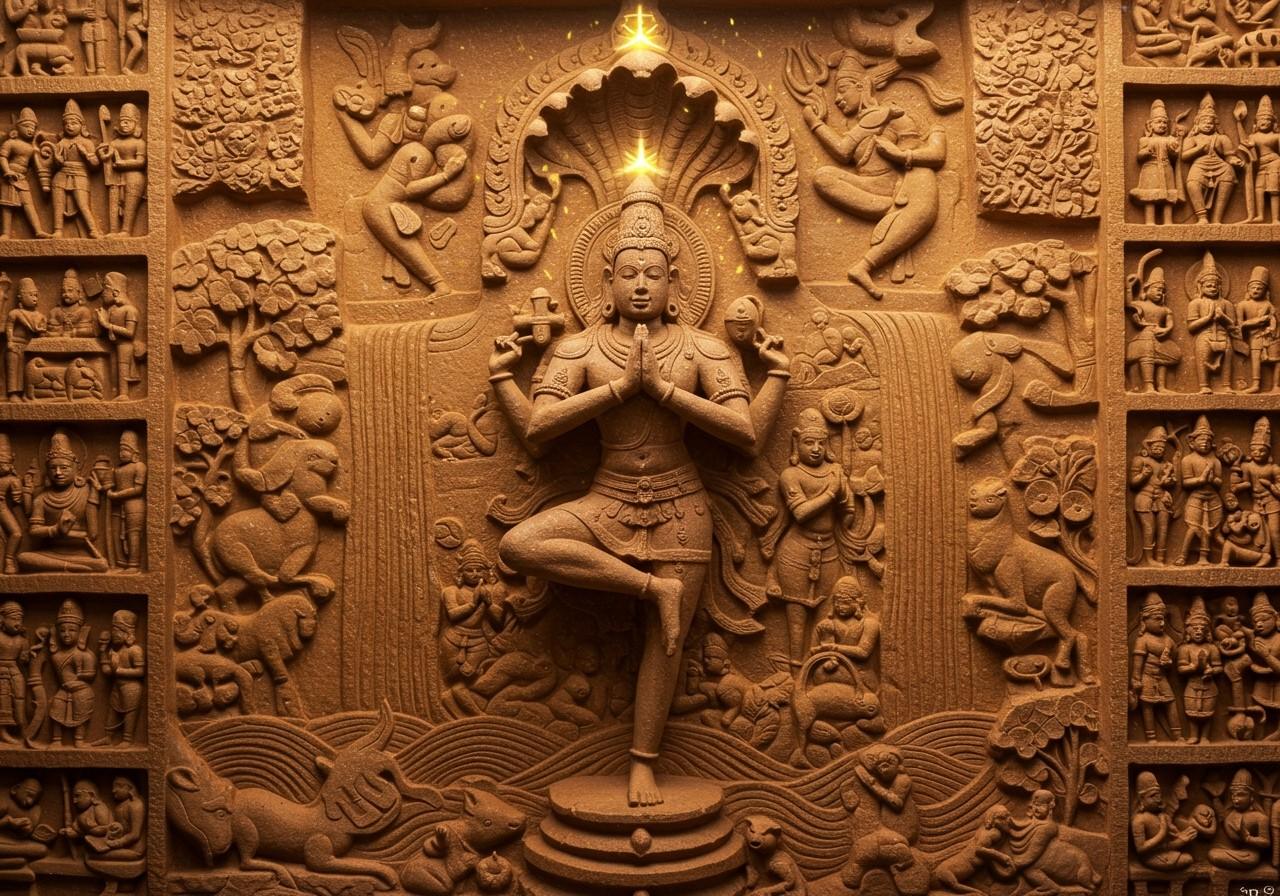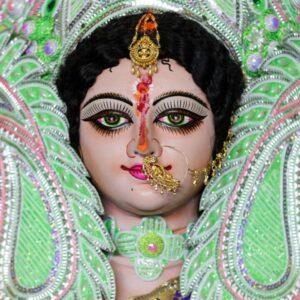
Arjuna’s Penance, also known as the Descent of the Ganges, is a breathtaking open-air rock relief in Mahabalipuram, Tamil Nadu, India. This colossal masterpiece, carved in the 7th century during the reign of Pallava king Narasimhavarman I, is a UNESCO World Heritage Site and a testament to the artistic and engineering prowess of the Pallava dynasty. The sculpture vividly portrays scenes from Hindu mythology, most notably Arjuna’s arduous penance to obtain the divine weapon Pasupata from Lord Shiva and the descent of the Ganges river led by Bhagiratha.
Historical Context
Mahabalipuram, a historic port city on the Coromandel Coast, flourished under the Pallava dynasty (3rd to 9th century AD). King Narasimhavarman I, also known as Mamalla, commissioned many of the city’s iconic sculptures and monuments, including Arjuna’s Penance, located near the Shore Temple. These works showcase the Pallava’s mastery of stone carving, their deep devotion to Hinduism, and their significant contribution to Indian art and architecture.
Deciphering the Narrative
The gigantic bas-relief, measuring 96 feet long and 43 feet high, weaves together multiple narratives from the Mahabharata and other Hindu legends. Central to the scene is Arjuna, the great warrior, engaged in intense penance to appease Lord Shiva. The sculpture also depicts the descent of the Ganges from heaven to earth, a story intertwined with Arjuna’s quest. A multitude of celestial beings, animals, and human figures populate the scene, adding to the complexity and richness of the narrative.
Artistic and Architectural Brilliance
Arjuna’s Penance exemplifies the Pallava’s mastery of stone carving. The intricate details, lifelike figures, and dynamic composition bring the mythological stories to life. The sculptors skillfully employed techniques of perspective, composition, and symbolism to create a visually stunning and narratively compelling masterpiece.
Mahabalipuram’s Sculptural Heritage
Mahabalipuram is renowned for its rich collection of stone sculptures, including the Pancha Rathas (Five Rathas), the Shore Temple, and numerous cave temples. Arjuna’s Penance stands as a highlight among these treasures, showcasing the diversity and artistic excellence of the Pallava sculptural tradition.
Cultural and Religious Significance
Arjuna’s Penance holds deep cultural and religious meaning for Hindus. It embodies the virtues of devotion, perseverance, and the power of divine intervention in human affairs. The sculpture is revered by devotees and plays a role in religious rituals and practices.
Preservation and Tourism
Mahabalipuram attracts visitors from around the world who come to marvel at its rich heritage and artistic wonders. Ongoing efforts to preserve and maintain these ancient sculptures are crucial for safeguarding this cultural legacy for future generations. Sustainable tourism practices are essential to protect the historical site and ensure its long-term preservation.
Connecting with the Sacred through Poojn.in
Inspired by the devotion depicted in Arjuna’s Penance? Poojn.in offers a wide selection of authentic puja items to enhance your spiritual practice. Our collection includes:
- Panch Ratna Sets: Representing the five precious stones, these sets symbolize auspiciousness and are essential for various religious ceremonies. Find beautifully crafted Panch Ratna sets and other sacred items on Poojn.in.
- Complete Puja Kits: Everything you need for your puja rituals, conveniently packaged together. Explore our range of puja kits at Poojn.in.
- Holy Idols: Beautifully crafted idols of deities for your home shrine. Discover a divine collection of holy idols on Poojn.in.
- Traditional Puja Samagri: A wide range of incense, herbs, and other essential items for your puja. Browse our extensive collection of puja samagri on Poojn.in.
- Sacred Jewelry: Adorn yourself with sacred jewelry that connects you to your spiritual practice. Find exquisite sacred jewelry on Poojn.in.
- Authentic Ritual Utensils: High-quality utensils for performing rituals with reverence and tradition.Shop for authentic ritual utensils on Poojn.in.
Visit poojn.in today to explore our complete collection of 186+ puja items. We deliver across India, bringing the sacred traditions to your doorstep.
Conclusion
Arjuna’s Penance in Mahabalipuram is more than just a stone carving; it’s a portal to a world of ancient stories, artistic brilliance, and spiritual significance. This magnificent artwork stands as a testament to human creativity, devotion, and the enduring power of mythology. As we admire and preserve these ancient treasures, we connect with the rich tapestry of our heritage and ensure that these stories continue to inspire generations to come.
Explore more about India’s rich spiritual heritage through our articles on Parsurameswar Temple, Sacred Sites of Odisha, and Parshuram Temples in Goa and Kerala.

